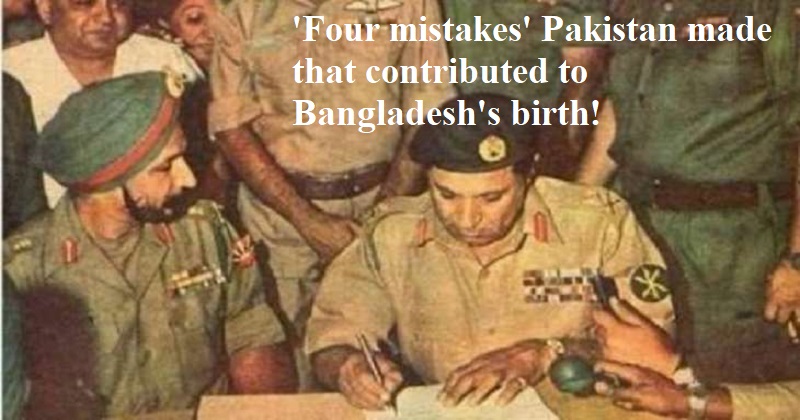
Some pictures continue to have a lasting impression on the nation as a whole. On December 16, 1971, at Dacca (as it was then known), Pakistan’s General AAK Niazi signed the document of surrender while Lt. General Jagjit Singh Arora watched. The history and geography of the Indian subcontinent were drastically altered in just seven months, starting with the Pakistan army’s repression of East Pakistani agitation in March 1971 and ending with its shamefaced capitulation that officially led to the foundation of a sovereign Bangladesh.
Pakistani military gives up in Bangladesh
History is authored by its players in its first iteration. The history that is passed down to succeeding generations is, however, more comprehensive and is based on data that not all of the participants had access to. A penultimate account of the events of 1971 that extends to the Simla Agreement between Indira Gandhi and Zulfiqar Ali Bhutto in early 1972 may be constructed fifty years after the resounding Indian triumph. The version will unavoidably remain incomplete until the Pakistani archives are unsealed to add to the extensive collection of official records, personal papers, and personal memories accessible in India, Bangladesh, and the United States.
The Bangladesh war exposed the sheer untenability of the doctrine on which Pakistan had crafted its nationhood after 1947. For a country created on the conviction that Muslims in united India constituted a separate nation bound by faith, the separation of East Pakistan was emotionally shattering. That the captives were returned home unharmed after the Simla Agreement owed more to misplaced Indian magnanimity than the belief that it was counter-productive to incur the permanent enmity of Pakistan.
There was a strong belief in the Pakistan establishment that Bengali-speakers were insufficiently Muslim and too infected by Hindu influences. This was at the heart of Mohammed Ali Jinnah’s attempt in 1948 to make Urdu the dominant language in the eastern part of Pakistan. This desire to eradicate Hindu influence was also behind the systematic targeting of the Hindu minority during the post-March 1971 crackdown.
Bengali-speakers in Pakistan were always second-class citizens in the land of the pure, and their exodus from what was then West Pakistan was no exception. That most of the millions of refugees who crossed over into India were primarily Hindus has only now been recognised, thanks to the publication of the Blood Telegram by American diplomat based in Dacca.
The defence of East Pakistan was based on a strategy of diversion. Pakistan believed that a full-scale, time-bound conflict in the west would concentrate India’s entire attention. There was also a small belief that China would do something along its border with India to keep the Eastern Command preoccupied. The External Affairs Ministry clung to a naïve belief in the unity of Pakistan.
The resolve of the Pakistan army was considerably eroded by the unending guerrilla warfare of the Mukti Bahini. Despite blandishments from different quarters, the Awami League leadership, particularly Tajuddin Ahmed, kept its faith in the sincerity of India to act in the interests of Bangladesh. Alas, the doubters lingered in the shadows and got their way in August 1975 with the murder of Mujib and the top echelon of the Awami League.

Post Your Comments